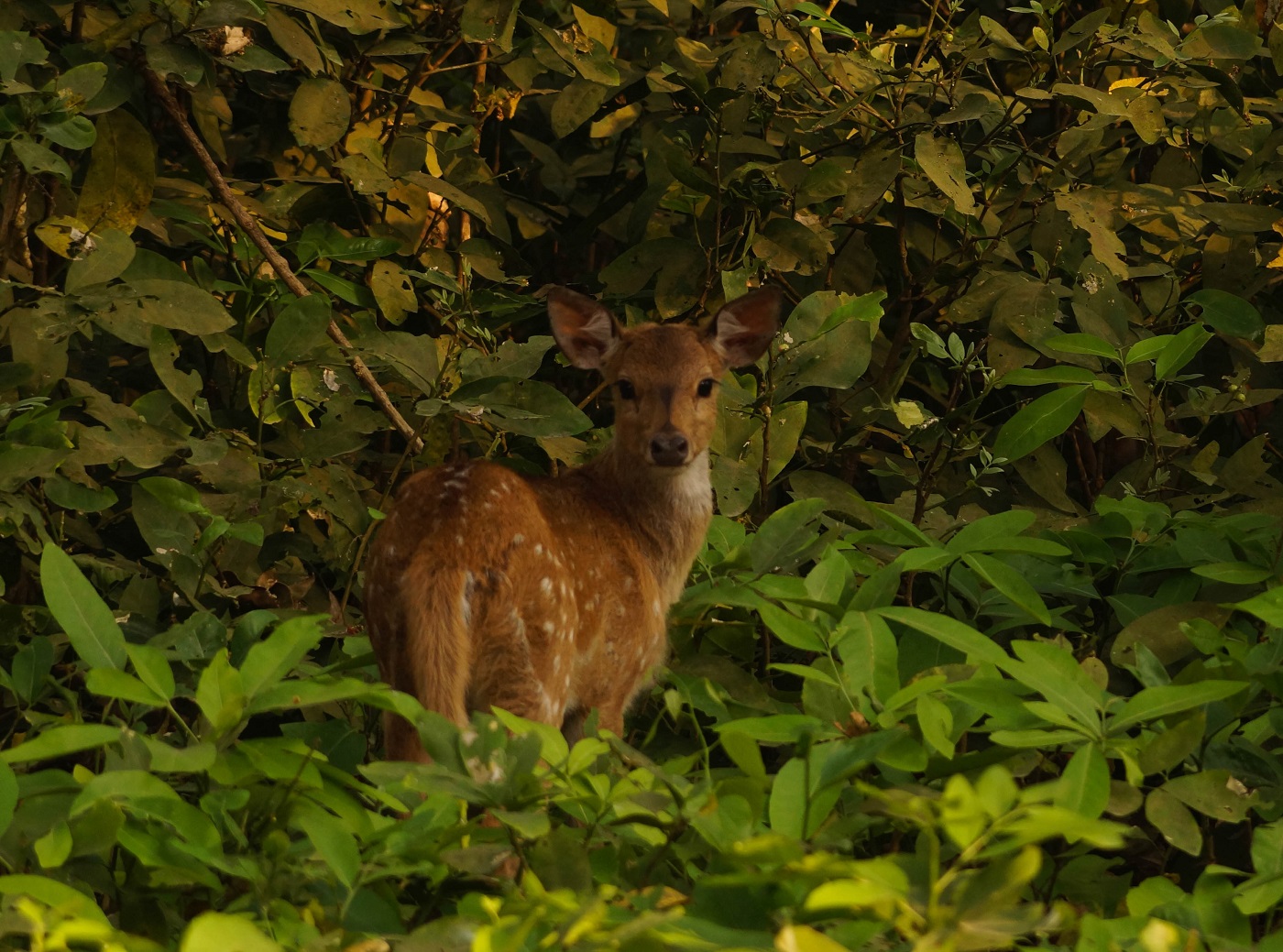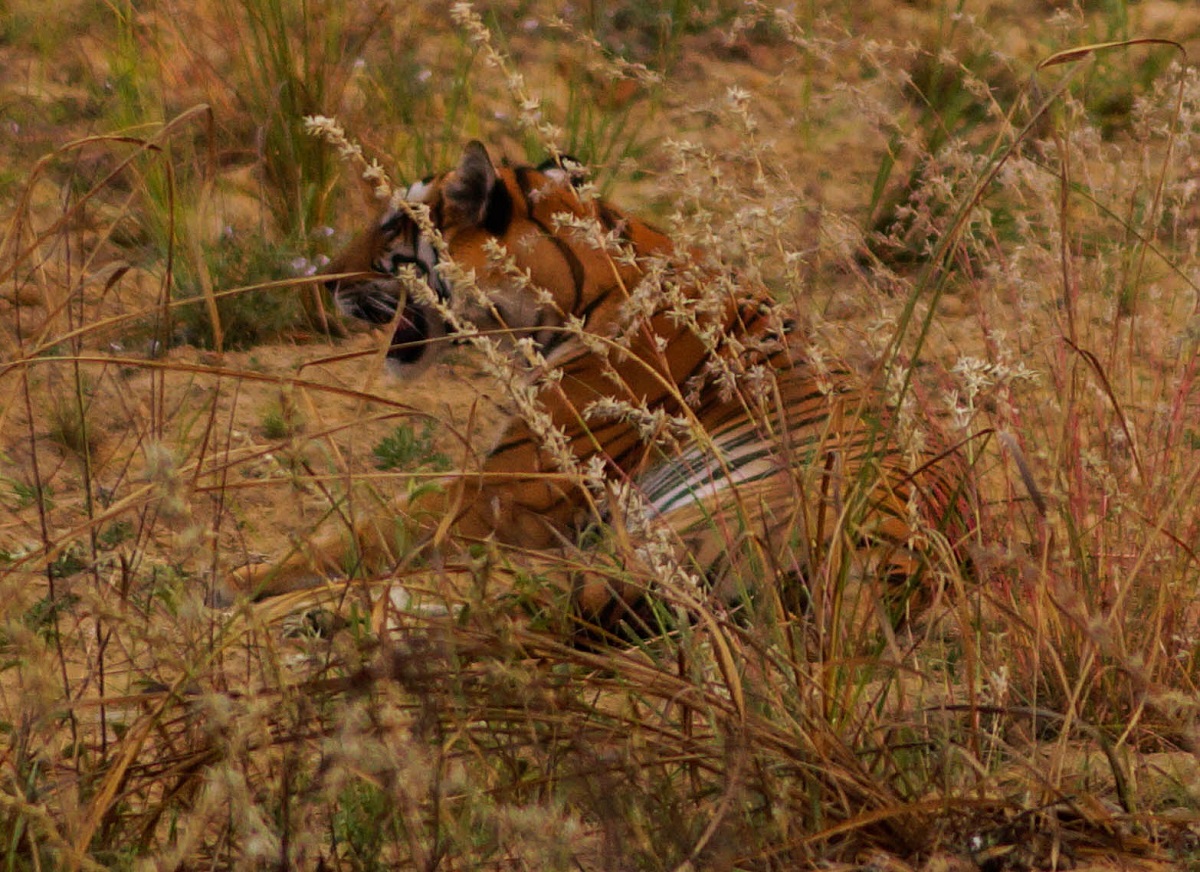DUDHWA IN A NUTSHELL
LOCATION:
The Dudhwa National Park lies in the sub-Himalayan region referred to as the Terai belt.
The Park is tucked between India and Nepal in the Lakhimpur-Kheri District of the Indian State of Uttar Pradesh.
GEOGRAPHICAL LOCATION:
The Park lies between 28^18’N and 28^42’N latitudes and 80^28’E and 80^57’E longitudes.
DISTANCES:
From Delhi (via Bareilly and Shahjehanpur): 450 km
From Lucknow (via Sitapur and Lakhimpur): 250 km
From Shahjehanpur: 110 km


AREA:
Dudhwa National Park: 680 sq km (including 190 sq km Buffer Area).
Kishanpur Wildlife Sanctuary: 203 sq km.
Total Area (Dudhwa Tiger Reserve): 883 sq km.
(The Dudhwa Tiger Reserve comprises of Dudhwa National Park, the Kishanpur Wildlife Sanctuary and Katarniaghat Wildlife Sanctuary)
YEAR OF ESTABLISHMENT:
1st February 1977.
ECOLOGICAL IMPORTANCE:
Dudhwa is the last remnant of Terai region, one of the most endangered ecosystems on the planet.
This complex ecosystem is a beautiful mosaic of dense Sal jungles, Grasslands and Swamps.
Forty-seven species of mammals are found at Dudhwa; of these thirteen species are endangered.
Dudhwa is home to a sizable tiger population.
This place is the last refuge for critically endangered sub-species of the Swamp deer, Cervus duvauceli duvauceli (called Barasingha in Hindi).
Out of the seven species of deer in India, five (swamp deer, sambar, barking deer, spotted deer and the hog deer) thrive at Dudhwa. The only place in the world inhabited by 5 species of deer.
Critically Endangered species like the Bengal Florican and Hispid Hare have been rediscovered at Dudhwa.
Besides 13 species of mammals, 9 species of birds and 11 species of reptiles & amphibians are Endangered (listed in Schedule-1 of the Wildlife (Protection) Act).
The grasslands are the natural habitat of Indian one-horned Rhinoceros. About a hundred and fifty years ago the last rhino was hunted to extinction. Conservationists felt that Dudhwa could support a rhino population. In 1984, rhinos from Assam and Nepal were introduced. The rhinos are kept inside an electrical fence and their activities are strictly monitored. The family has increased to 17, despite the initial hiccups.
The Park affects the water and climatic conditions of the region. This is absolutely essential for the human survival and agriculture (the main thrust of local economy).
FLORAL WEALTH OF DUDHWA
GRASSES: 31species.
SHRUBS, HERBS & CLIMBERS: 107 species
TREES: 89 species
WETLAND FLORA: 34 species
PTERIDOPHYTES: 7 species
BRYOPHYTES: 5 species
ALGAE: 17 species
FUNGI: 13 species
FAUNAL WEALTH OF DUDHWA:
BUTTERFLIES: 37 species
FISHES: 79 species
AMPHIBIANS: 10 species
REPTILES: 35 species
BIRDS: 449 species (including Winter Migrants)
MAMMALS: 47 species.
ENDANGERED SPECIES (List 1 of the Wildlife (Protection) Act:
MAMMALS: Hispid Hare, Giant Flying Squirrel, Ratel, Pangolin, Blackbuck, Swamp Deer, Fishing Cat, Leopard Cat, Leopards, Tiger, Sloth Beer and One Horned Rhinoceros.
BIRDS: Black Crested Baza, Bengal Florican, Great Indian Hornbill, Indian Pied Hornbill, Laggar Falcon, Shaheen Falcon, Red Headed Merlin, Osprey and Peafowl.
REPTILES: Crocodile, Gavial, Gangetic Soft-Shelled Turtle, Indian Soft-Shelled Turtle, Peacock Soft-Shelled Turtle, Indian Tent Turtle, Terrapin Batagur Basak, Eastern Hill Terrapin, Shell Terrapin and Spotted Terrapin.


